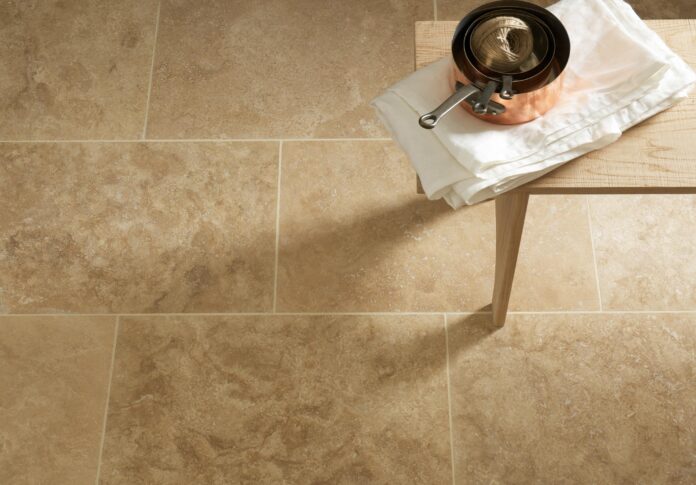Travertine is and continues to be one of the most widely used natural stones in interior and exterior design. It is the preferred choice for bathrooms, kitchens, and living rooms. And it is a gorgeous element for house facades, exterior flooring, and more. It is not surprising – the tradition dates back to the ancient Romans, who built the famous Colosseum almost entirely of travertine.
To know more about the Colosseum click here.
Today, there are large travertine deposits in Tivoli, Italy, and about 40% of the world’s travertine and marble deposits are in Denizli, Turkey.
Although an eternal classic, travertine is also used in modern and contemporary architectural design. A beautiful creme blend example is the Montemerano Classico. This tile has the typical raw natural feel of the stone. These tiles are suitable for outdoor areas like patios, for example. To learn more about travertine tiles, visit here.
Why Are Travertine Tiles So Popular?
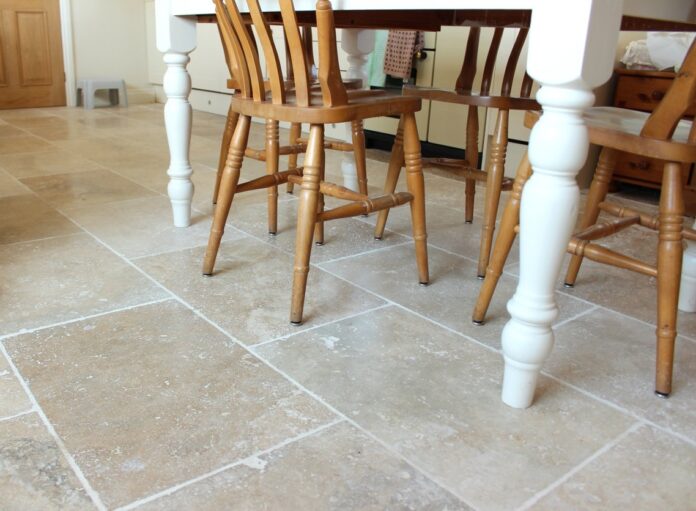
This canonical design and aesthetics have inspired many of the innovative applications of travertine in modern spaces.
Architects and designers adore the character of the porous surface of this stone. Its natural beauty radiates, through the diverse selection of shades and patterns that converge with the classic look, fitting almost any interior or project, from kitchens to bathrooms, from walls in main rooms to living rooms, and creative architectural solutions for indoor stairs. Travertine is, without a doubt, the optimal luxury choice.
Another advantage of travertine tiles is that they can fit in any type of already existing home decor, which means that if you choose to go for the travertine flooring, you don’t have to redecorate your whole area. Well, this has a simple explanation. Nature fits anywhere.
What Are the Pros and Cons of Using Travertine Tiles?
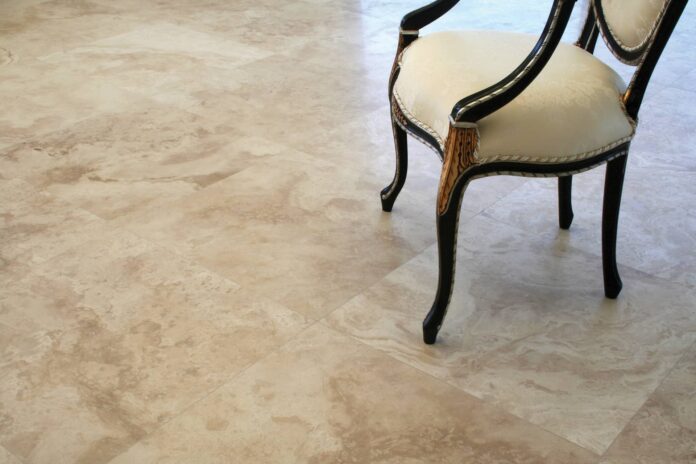
Modern spaces, and traditional, sophisticated areas, are unmistakably accentuated with the addition of travertine elements, be it a smooth polished floor, fireplace, or facade.
The benefits of travertine for home decor are infallible. An example of exceptional design luxury is the interior of a living room made of travertine, in which the walls, floor, and fireplace light up with beautiful stone. The space looks chic and timeless at the same time.
Although it is easy to maintain, this stone doesn’t tolerate acidic substances. When you clean it, you have to make sure that you use more alkaline products. If you stain travertine, you have to clean it right away so that the dirt doesn’t go deep into the pores of the texture.
Th porous structure of the surface of the travertine tiles gives the stone this irregular and very natural look. But those pores get stains, especially on the floor from everyday traffic. Therefore, this is the preferred choice of people who appreciate the authenticity and warmth of the travertine to choose a durable finish.
Travertine can be used in construction, not only in interior decoration. Many modern building facades include travertine elements. Contractors should consider the durability of the travertine. The finish should be suitable for rough weather conditions.
Indoors, travertine tiles create an inviting atmosphere for the kitchen, bathroom, and living room. Travertine tiles are among the most valued in terms of quality and look. Designers cherish this stone for its aesthetics, radiance, and durability.
Quality Travertine Flooring
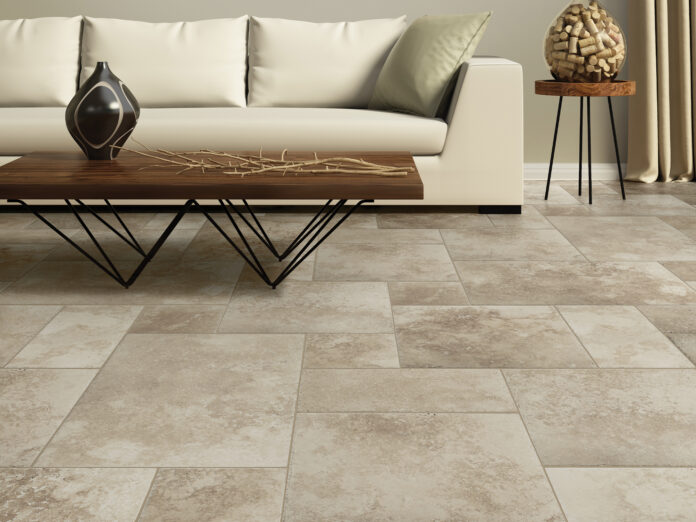
The travertine flooring can create an elegant and warm atmosphere in each room. Another thing to consider, however, is the price.
Keep in mind that natural stone is affordable. You can find it on the market for less than 50 euros per square meter. However, the price also depends on the finish and the quality of the travertine. So the better the quality, the more price – you will pay.
However, choosing the best quality means choosing a timeless decor for your home. High-quality tiles like the ones offered by Saturnia Travertini would give a natural feel while also providing the needed durability for your interior or exterior areas.
Travertine tiles should not get cut with a manual cutter. You have to use a diamond blade cutter and preferably cut the tiles outside. The cutting of these tiles would lead to lots of dust since it is a natural stone material. It is best to turn to professionals when for tiles’ cutting and installation.
Travertine tiles are not recommended for use in exterior areas, because their natural material is sensitive to the extreme weather conditions. The travertine should only be used indoors or in moderate weather climates.
Another important thing that you must consider when thinking about purchasing travertine tiles is its resistance to chemical substances and acidic liquids. As mentioned earlier, this type of stone doesn’t tolerate these kinds of products well. If someone spills any kind of acid product on this stone, or burns it with an iron, the floor will immediately get damaged so you have to take care when using it around children and pets.
How can Travertine Tiles affect your health? Health concerns linked to travertine tiles include the presence of crystallized calcium carbonate, which can release harmful crystallized particles into the air. The main health concern with travertine tiles is the inhalation of airborne particles, which can cause respiratory problems. If you have asthma or any other respiratory problems, it is best to avoid using travertine tiles in your home.
When choosing travertine tiles for your home, be sure to consider the potential health risks associated with their use. Crystallized calcium carbonate can release harmful particles into the air, which can cause respiratory problems. If you have asthma or any other respiratory problems, it is best to avoid using travertine tiles in your home.
In Conclusion
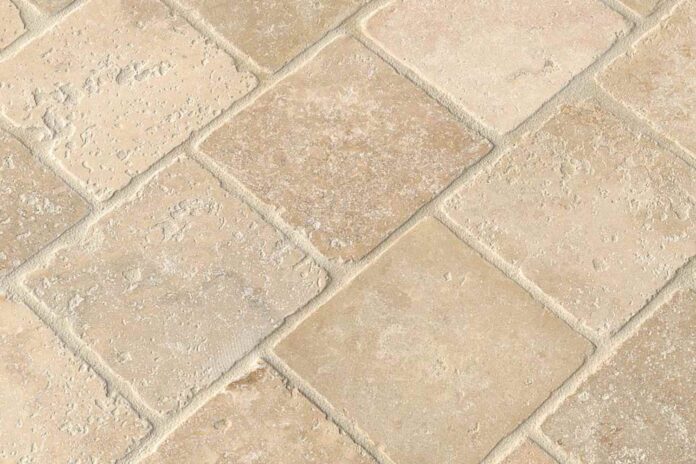
Travertine tiles have much more benefits than disadvantages. This natural stone material has been used since ancient times and proves it is timeless. The tiles aren’t hard to maintain.
However, when they stain, it’s best to clean them right away so that the dirt doesn’t get deep into the pores. Remember that travertine doesn’t tolerate acidic substances, so you should be careful when cleaning it. This also has its benefits because you can just clean the tiles with a wet sponge and soapy water. Finally, you can’t go wrong if you choose travertine for your home decor.

